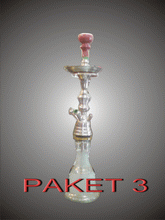Recently many cities, states and counties have implemented indoor smoking bans. In some jurisdictions, hookah businesses can be exempted from the policies through special permits. Some permits however, have requirements such as the business earning a certain minimum percentage of their revenue from alcohol or tobacco.
In cities with indoor smoking bans, hookah bars have been forced to close or consider alternatives, such as offering flavored tobacco based maasel. In many cities though, hookah lounges have been growing in popularity. From the year 2000 to 2004, over 200 new hookah cafes opened for business, most of which are targeted at a young-adult age group, and were particularly near college campuses or cities with large Middle-Eastern communities. This activity continues to grow in popularity within the post-secondary student demographic.
In North America, the term 'shisha' is not as commonly used as 'hookah'. Sometimes 'Shisha' can also refer to the Flavored Tobacco inside the pipe as opposed to the Hookah pipe itself.





